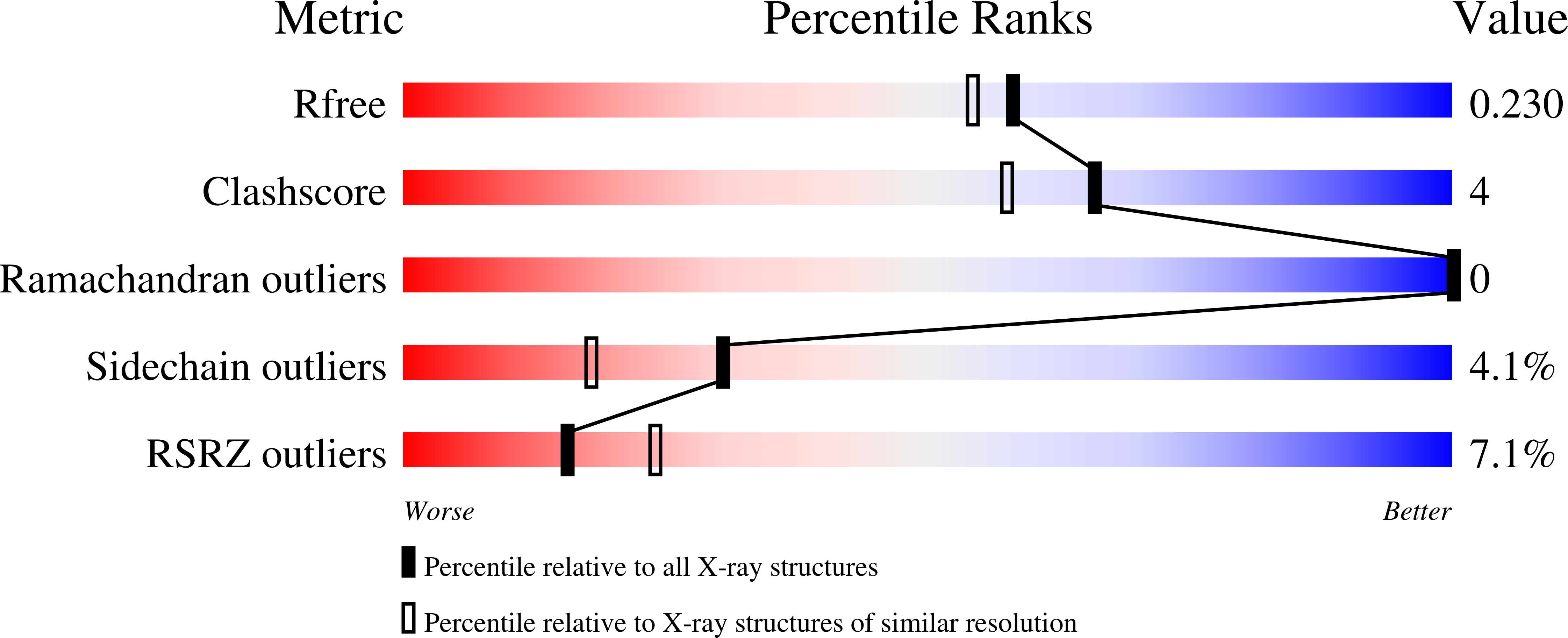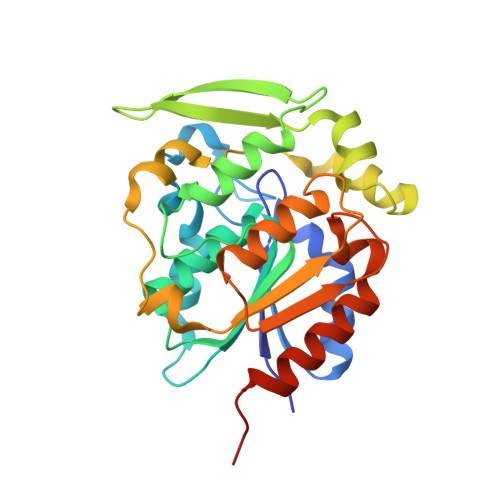Larger active site in an ancestral hydroxynitrile lyase increases catalytically promiscuous esterase activity.
Jones, B.J., Evans 3rd, R.L., Mylrea, N.J., Chaudhury, D., Luo, C., Guan, B., Pierce, C.T., Gordon, W.R., Wilmot, C.M., Kazlauskas, R.J.(2020) PLoS One 15: e0235341-e0235341
- PubMed: 32603354
- DOI: https://doi.org/10.1371/journal.pone.0235341
- Primary Citation of Related Structures:
5TDX - PubMed Abstract:
Hydroxynitrile lyases (HNL's) belonging to the α/β-hydrolase-fold superfamily evolved from esterases approximately 100 million years ago. Reconstruction of an ancestral hydroxynitrile lyase in the α/β-hydrolase fold superfamily yielded a catalytically active hydroxynitrile lyase, HNL1. Several properties of HNL1 differ from the modern HNL from rubber tree (HbHNL). HNL1 favors larger substrates as compared to HbHNL, is two-fold more catalytically promiscuous for ester hydrolysis (p-nitrophenyl acetate) as compared to mandelonitrile cleavage, and resists irreversible heat inactivation to 35 °C higher than for HbHNL. We hypothesized that the x-ray crystal structure of HNL1 may reveal the molecular basis for the differences in these properties. The x-ray crystal structure solved to 1.96-Å resolution shows the expected α/β-hydrolase fold, but a 60% larger active site as compared to HbHNL. This larger active site echoes its evolution from esterases since related esterase SABP2 from tobacco also has a 38% larger active site than HbHNL. The larger active site in HNL1 likely accounts for its ability to accept larger hydroxynitrile substrates. Site-directed mutagenesis of HbHNL to expand the active site increased its promiscuous esterase activity 50-fold, consistent with the larger active site in HNL1 being the primary cause of its promiscuous esterase activity. Urea-induced unfolding of HNL1 indicates that it unfolds less completely than HbHNL (m-value = 0.63 for HNL1 vs 0.93 kcal/mol·M for HbHNL), which may account for the ability of HNL1 to better resist irreversible inactivation upon heating. The structure of HNL1 shows changes in hydrogen bond networks that may stabilize regions of the folded structure.
Organizational Affiliation:
Department of Biochemistry, Molecular Biology and Biophysics and The Biotechnology Institute, University of Minnesota, Saint Paul, Minnesota, United States of America.















